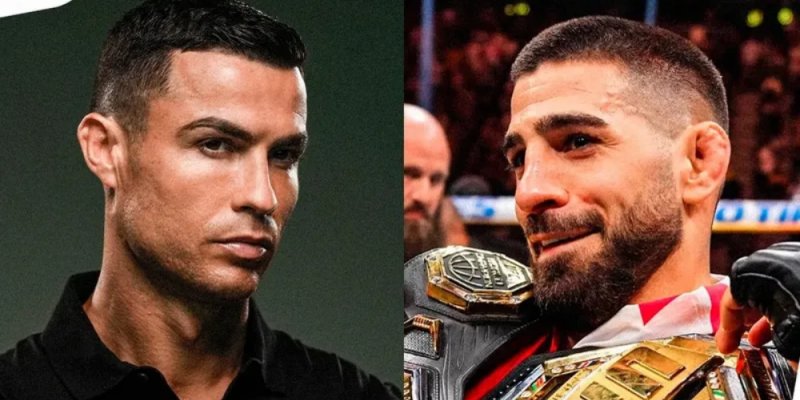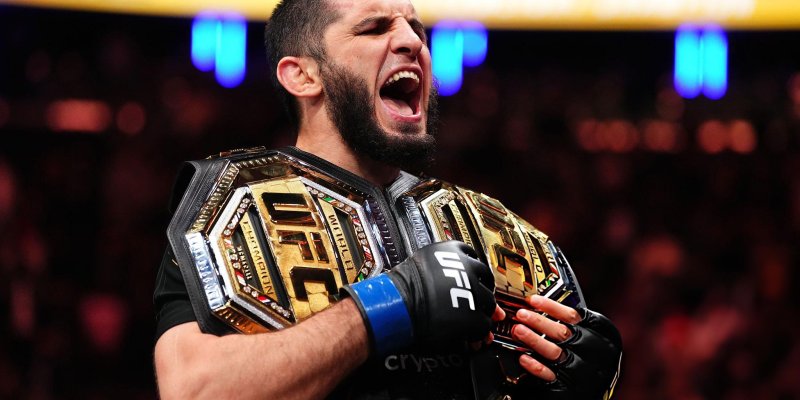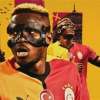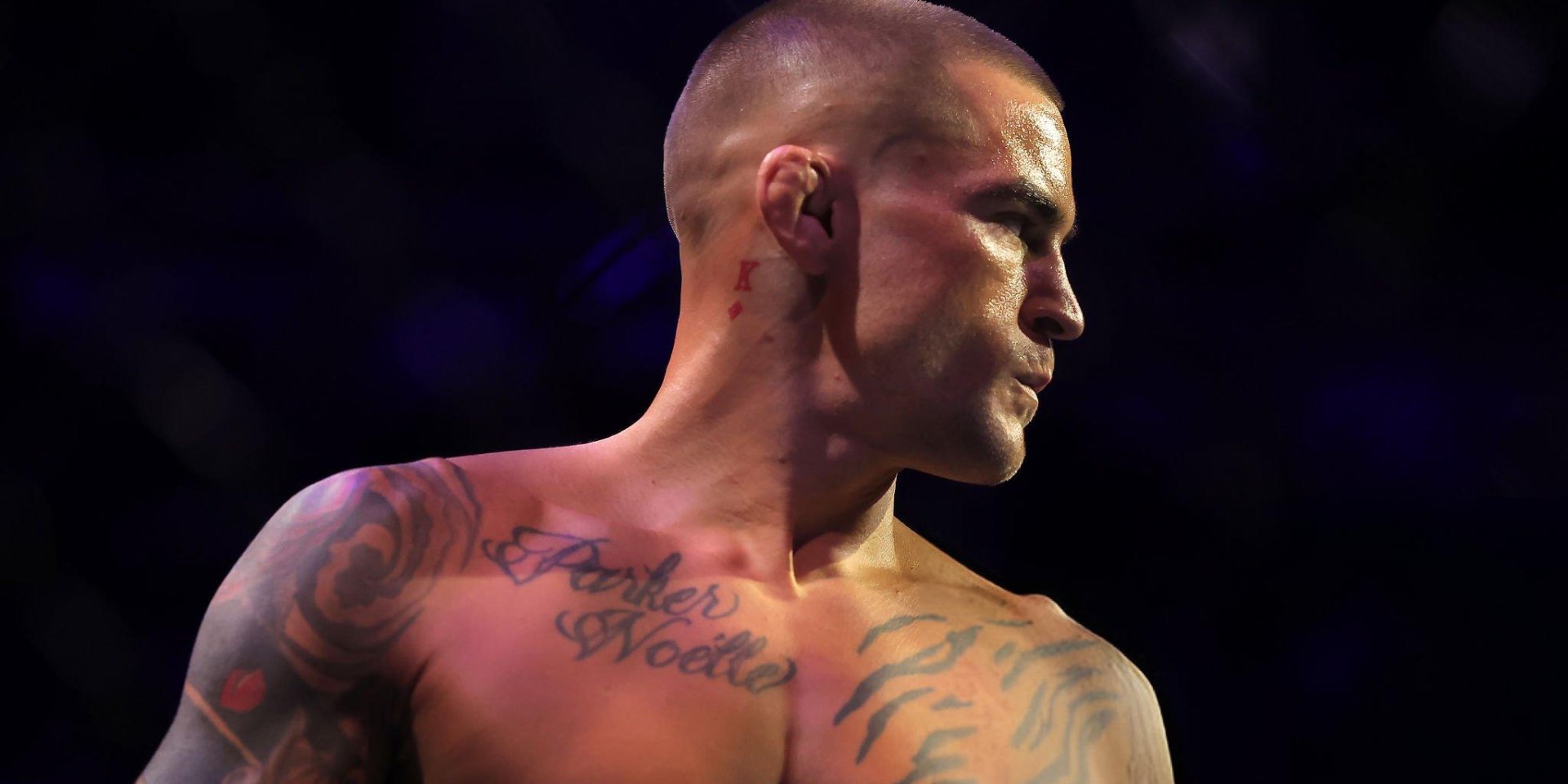
“Every drop of sweat and blood was worth it” – with that mindset, Dustin Poirier stepped into the Octagon for his farewell fight in his native Louisiana. The legendary veteran decided to close his career with a trilogy against Max Holloway and put a period on their long-standing rivalry by contesting the BMF (Baddest Motherf***er) title.
The Trilogy Begins: Young Featherweights

The first Poirier–Holloway bout took place in February 2012, when both fighters were just starting out in the UFC. Twenty-three-year-old Poirier already had 11 professional victories (11–1 record), while twenty-year-old Holloway debuted with a clean 4–0 slate. The fight was largely contested on the feet, but in the second minute Poirier secured a takedown and smoothly locked in an armbar on Holloway’s arm – Max was forced to tap, and Dustin earned the “Submission of the Night” bonus.
Heroes Return: Rematch for the Interim Title
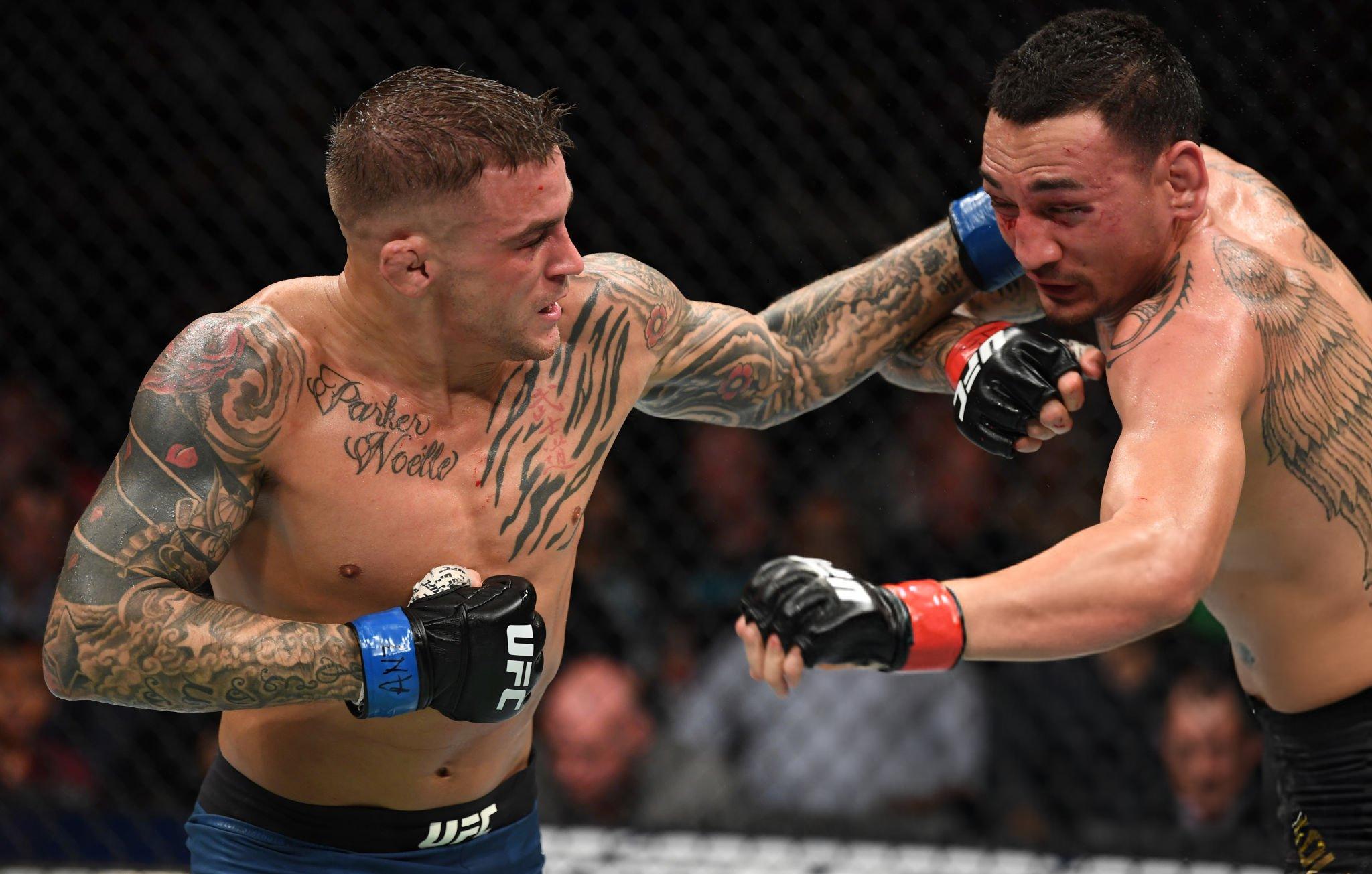
Seven years later, the veterans met again at UFC 236 in Atlanta. Now they were division stalwarts: Holloway was the reigning Featherweight Champion on a 13-fight win streak, and Poirier was one of the top contenders at Lightweight. The interim Lightweight title was on the line, with the winner earning a shot at Khabib Nurmagomedov. The five-round war saw Poirier nearly knock out Holloway in the first round, but his submission attempt fell short, and judges awarded Dustin a split-decision victory. The bout won “Fight of the Night,” though Poirier would lose to Khabib five months later.
Last Dance in New Orleans: Emotional Stakes
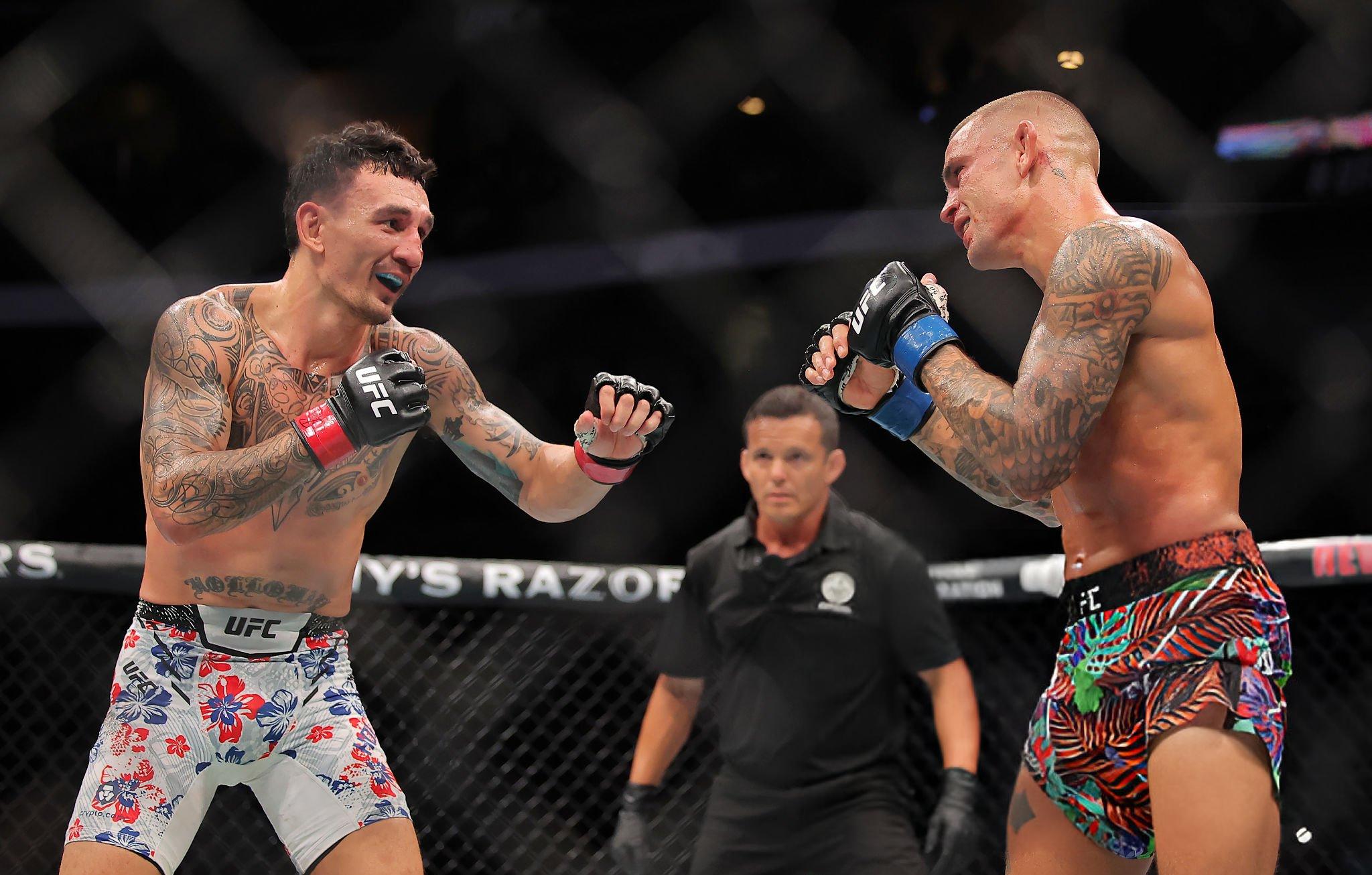
In April 2025 at UFC 318, Poirier announced his intention to retire in spectacular fashion. He vowed to deliver “the best fight,” share the moment with his family, and exit on a high note. Accompanied by a track from Lil Wayne, he took center stage as his hometown crowd in Louisiana prepared to salute his final performance. His motivation was simple: “If I could go back to 17 years old, I’d choose MMA again.” Holloway, recalling past defeats and broken win streaks, treated the contest as personal payback: “I need to ruin his farewell fight just like he did to me.”
Tactics and Tempo: Striking vs. Grappling
From the opening bell, Holloway showcased sharp counterstrikes: he dropped Poirier in the first round but couldn’t finish, allowing Dustin to recover to his feet. Poirier attempted to dictate the pace but appeared slower and more vulnerable to Holloway’s powerful jabs and clinch work. In the second round, Max dominated the distance with crisp combinations and constant movement around the cage.
Climactic Showdown: Final-Round Drama
The third round was the bout’s turning point: Holloway rocked Poirier again, but Poirier survived and mounted a guillotine choke attempt in the scramble. In the fourth, both fighters slowed—Max favored series of strikes while Dustin responded with single, heavy blows. The fifth round brought peak drama: both men came inches from knockdowns and exchanged ferocious strikes in the cage’s center. Holloway even made his trademark finger-point gesture, daring Dustin to trade without defense.
Outcome and Legacy: Champion’s Farewell
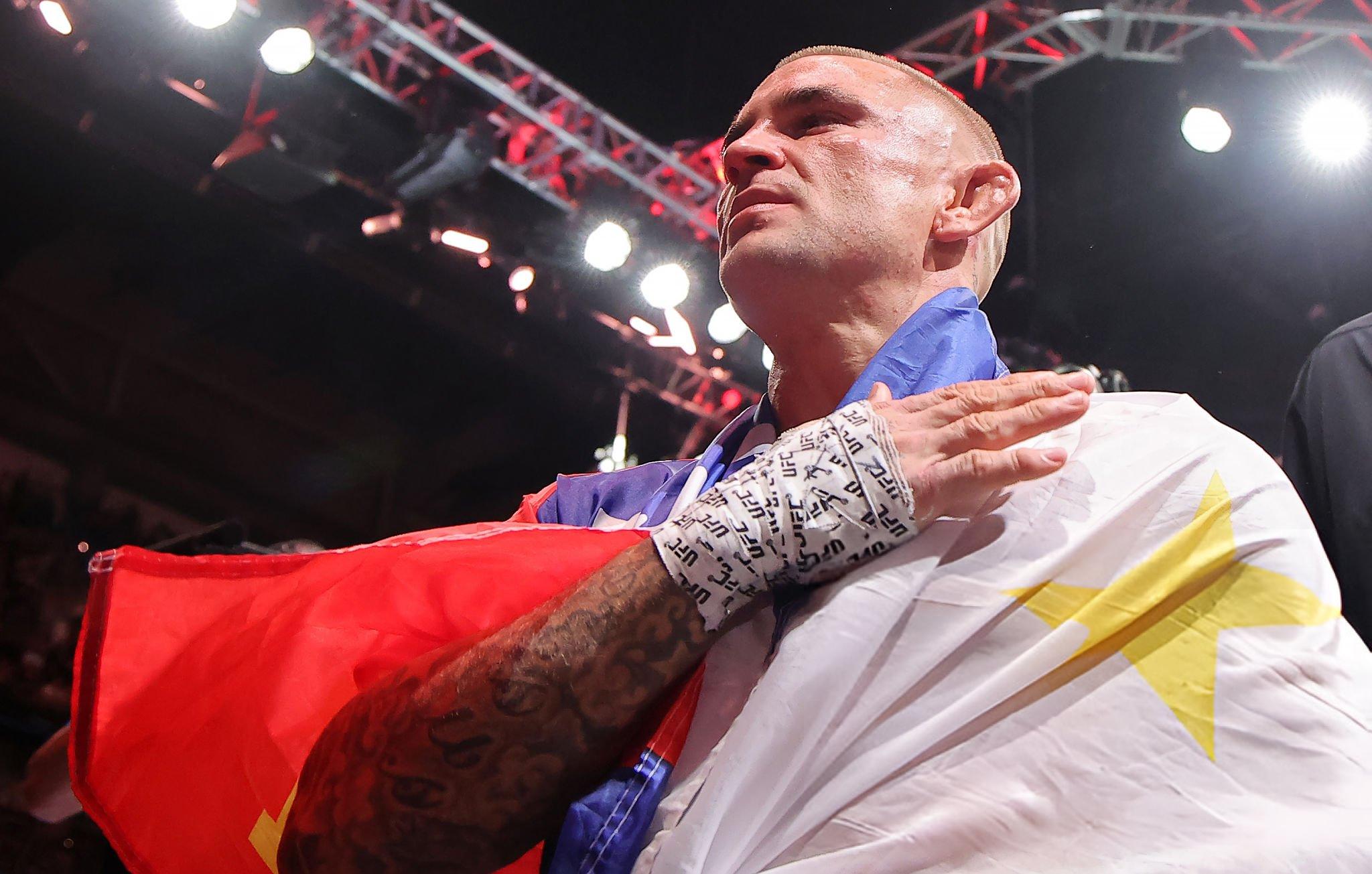
Judges rendered a unanimous decision in Max Holloway’s favor (48–47, 49–46, 49–46). Nearly 300 punishing strikes were thrown, but the BMF title remained with Holloway. Despite the hometown loss, Poirier earned immense respect—he placed his gloves on the canvas, invited his entire family into the Octagon, and bid farewell in an atmosphere of gratitude and affection. In his closing remarks, he said, “I’m forever indebted to MMA and the fans. Fighting at home and feeling your love was an incredible experience.”

